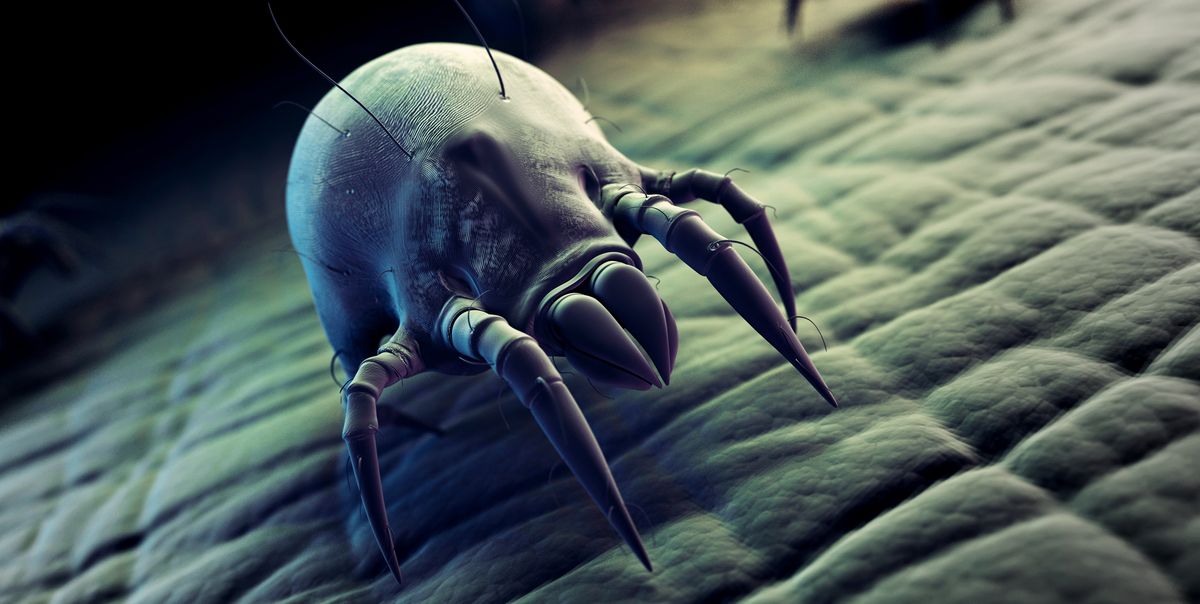Dust mites are in most modern cities, but why are they easily found in Malaysians homes more than other parts of the world? The tiny critters are almost to the naked eye, so why are Malaysians so concerned about sharing their home with them?
Why Does Dust Mite Allergies Affect Malaysians More Than Others?
Several different factors contribute to the prevalence of dust mite allergies in Malaysia. Lifestyle, furniture preferences, and genetics all have a role to play, but most of the blame lies with the Malaysian climate.
Malaysia has a warm and humid environment, making the country a tropical paradise not just for the people, dust mites love it as well. With temperatures ranging from 25-35 °C year-round, and an average annual humidity of more than 80%, dust mites are a persistent threat to Malaysian homes.
Furniture preferences also contribute to dust mite allergies. Heavy carpets, thick curtains, and other textile decorations are popular in Malaysian homes. Unfortunately, the thick material also creates the perfect environment for dust mites to make their homes and breed.
Genetics may also contribute to an individual's susceptibility to dust mite allergies. Families with a history of allergies can pass down the genetic traits that make people more prone to developing allergies.
The Link Between Dust and Dust Mite Allergies
Household dust is made up of a variety of substances, including dead skin cells, animal dander, pollen, and fibers from textiles. Dust mites thrive in the warm, humid environments of Malaysia, and their fecal matter and body parts can become airborne and mix with household dust.
When sensitive individuals inhale dust mite allergens, their immune systems can overreact and produce allergic symptoms. The symptoms of a dust mite allergy often resemble those of other allergies, including sneezing, a runny or stuffy nose, watery eyes, and skin rashes.
While dust mites are a common cause of allergies, they are not the only part of household dust that can cause an allergic reaction. Other allergens, such as pollen, pet dander, and mold, can also be present in household dust and cause similar symptoms.
Symptoms and Causes of Dust Mite Allergies
Dust mite allergies are not directly caused by dust mites but by the fecal matter and body parts that they leave behind. The tiny particles are easily airborne and can hide in pillowcases and bedsheets. Contact with the skin or inhaling the particles can trigger a variety of allergic responses, including:
- Sneezing
- Runny or stuffy nose
- Itchy or watery eyes
- Nasal congestion
- Itchy or sore throat
- Coughing
- Wheezing
- Shortness of breath
- Skin rashes or eczema
How to Avoid Dust Mite Allergies
The best way to avoid dust mite allergy symptoms is to reduce your exposure. Here are a few tips on how you can do that.
Dusting and Vacuuming
Use a damp cloth or mop to clean surfaces, and vacuum carpets, rugs, and upholstery with a HEPA filter vacuum cleaner like the Homi Dust Mite Vacuum. Don't forget the areas that are often overlooked, such as curtains, blinds, and sofas.
Regular cleaning of home environment to get rid of dust can also help reduce dust mite allergies symptoms. Use the Homi Vacuum Series to save your cleaning time.
Reduce Humidity
Dust mites thrive in warm and humid environments, so reducing humidity levels will make your home less favorable. Use air conditioning or a dehumidifier to keep the air in your home cool and dry and free of dust mites and their dander.
Wash Bedding and Soft Furnishings Regularly
Bed linen, pillows, and other soft furnishings will benefit from a regular wash that kills dust mites and removes their dander. If you've got stuffed toys, throw them in with the wash as well because they are a popular location for dust mites to make their home.
Also, use dust mite removal sprays like the Aftercare Dust Mite Spray to kill and restrict the growth of dust mites.
Use Allergen-Proof Bed Linen
Dust mite allergens can collect in mattresses, pillows, and bedding, so consider using allergen-proof covers to protect yourself from exposure.
Regular dusting and washing of fabrics will go a long way to controlling dust mite populations in your home. Sensitive individuals will also benefit from allergen-proof bed covers. Specialized tools such as the Homi Vacuum, dehumidifiers, and air filters can effectively eliminate dust mites and most other allergens from homes. For those struggling with dust mite allergies, consulting a healthcare professional for further advice and treatment options is important for improving their quality of life.




Leave a comment
This site is protected by reCAPTCHA and the Google Privacy Policy and Terms of Service apply.